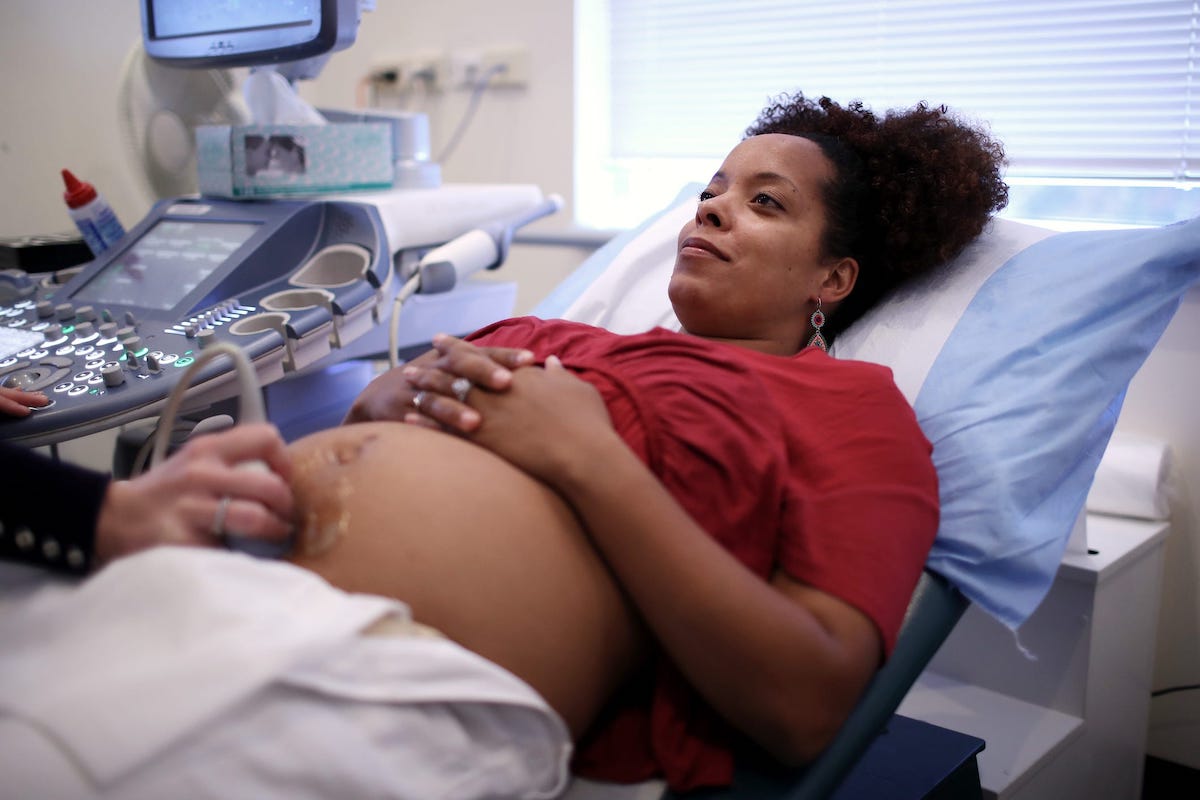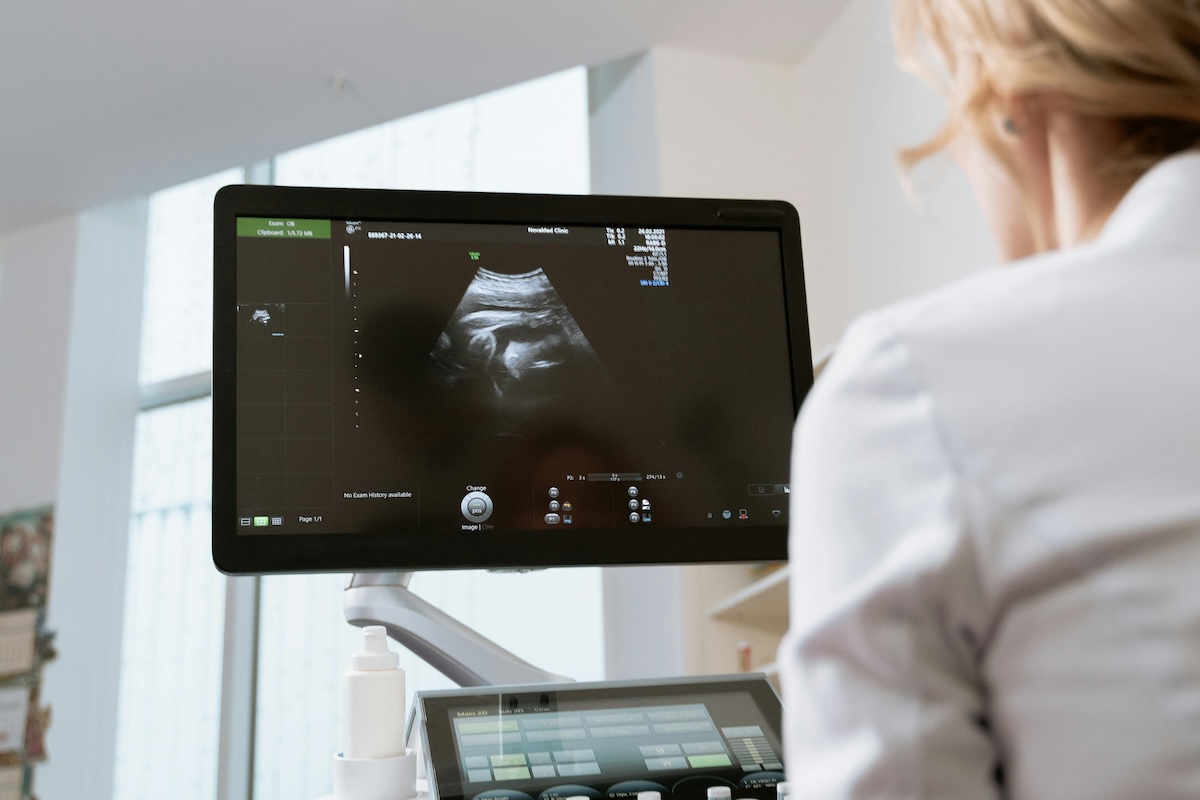Over the past few weeks, there has been a lot of discussion about the maternal mortality rate in the U.S. To summarize the debate:
- In the most recent data out of the CDC, there appears to be an alarming rise in the maternal mortality rate over the period from 2018 to 2021.
- A new paper argues that the high mortality rate is an artifact of the way the CDC reports these data.
Some commenters jumped on the new paper to argue that the CDC had overblown the problem due to their mistakes and that maternal mortality in the U.S. is not the crisis that it is made out to be. Others responded by arguing that the point was semantic and said the CDC numbers were closer to the right ones.
Today’s post is going to be a deep dive into this. As something of a spoiler alert: There is no real disagreement, because the CDC report and the new paper do not speak directly to each other. The CDC report is focused on the trend from 2018 to 2021, and the new paper is focused on a longer trend but doesn’t isolate differences in the more recent period. In the end, the answer — and I had to go to the raw data for this — is something in the middle. But I’m getting ahead of myself.
Before we get into it, it’s worth asking a basic question: Why are we fighting about this? Any way you slice it, the U.S. maternal mortality rate doesn’t compare favorably to comparably developed countries. There are also huge inequities in mortality, with maternal mortality rates for Black women far higher than for any other group. For a rich country that spends a lot of money on health care, we should be doing better. There is a legitimate argument that we should be focused only on finding solutions.
I see this point but would argue that a full understanding of the data — including trends over time and levels — is crucial for developing those solutions. If we do not understand the size and details of the problem, we may invest in the wrong things. Better data for better policies, as always.
The structure today:
- An overview of why this is a challenging data problem, and a review of some older issues with accounting
- The current debate: what the CDC says, and what this new paper says
- A summary and my own data analysis
Finally, I want to emphasize that my goal here is to take a hard look at the data so we can move away from debate and towards solutions. However, we are talking about maternal mortality, which may feel like a scary topic for some of you. If you are not up for reading about this today, please skip it and take care of yourself.
What do we mean by maternal mortality?
A reasonable person might ask why it is difficult to measure maternal mortality — why there is any debate or confusion at all here. In general, mortality is not difficult to measure. When we talk about infant mortality, it is clearly defined as the death of a live-born infant within one year of birth. This sharp definition makes it straightforward to look at trends over time and across space.
Maternal mortality, however, is not as easy to define. Conceptually, most people think of this as a death related to childbirth. What is complicated is the phrase “related to.” A narrow definition would be a death in childbirth, from bleeding or other complications. A wider definition would be a death around childbirth from a condition that was exacerbated by childbirth. This could be a heart condition, for example. The widest definition would simply be any deaths within a year (or some period) of pregnancy, regardless of cause.
It is not obvious which of these definitions is appropriate. Further, even once we choose a definition, actually connecting that with data is subtle. This is why this problem is complicated, and why there is disagreement.
For our purposes today, we are primarily focused on a particular definition of maternal mortality: “The death of a woman while pregnant or within 42 days of pregnancy termination — regardless of the duration or site of the pregnancy — from any cause related to or aggravated by the pregnancy or its management, but not from accidental or incidental causes.”
This settles what the definition is, but still does not make this problem easily amenable to data. It is often not clear whether a cause is “related to” or “aggravated by” pregnancy. If someone dies of cancer, it’s often quite difficult to know whether it was made more complicated by a pregnancy.
The pregnancy checkbox
For a long time, the CDC relied on causes of death, as listed on a death certificate, to classify deaths as pregnancy-related. In the early 2000s, however, the CDC became concerned that there were pregnancy-related deaths that were being missed. For example: a death from kidney failure that was caused by pregnancy might only be classified as kidney failure.
In 2003 the CDC introduced a “pregnancy checkbox” to death certificates. This was intended to be checked if the person who died was pregnant or had been within the past year. Deaths in this period could then be attributed to pregnancy when appropriate.
This checkbox appears to have resulted in the opposite of the undercounting problem — a significant overcounting. This paper and this one go into great detail about this, but the bottom line is that it resulted in many deaths that were obviously not pregnancy-related being classified in this category.
For example, in 2013 the pregnancy checkbox was used 187 times in deaths of people over age 85 (and 416 times in people 50 to 84). Adding to the confusion, the checkbox was rolled out slowly across states over time. So as states added the box, maternal mortality rates appeared to be continually climbing. It was impossible to see if this was about changes in reporting or real trends, so between 2007 and 2017 the CDC did not report overall U.S. maternal mortality data.
In 2018, at which point all states had introduced this pregnancy checkbox, the CDC re-evaluated. They issued an updated approach. In this approach, the checkbox would be restricted to people ages 10 to 44. In addition, there were some restrictions on when the checkbox would be used without other underlying information.
The goal with this new approach was to generate data that was comparable over time and would reflect, as closely as possible, the intended mortality rate definition.
Changes in mortality over time: CDC
By 2018, all states had adopted the pregnancy checkbox and the CDC had an updated plan for using it. The CDC was therefore in a position to start reporting maternal mortality rates again.
It was clear when this plan was made that these new figures were not going to be comparable to the figures from before 2003. You can’t change reporting at this scale, with something this complicated, and expect to be able to compare the old numbers to the new ones, apples to apples. The CDC understood this.
In the 2018 report in which they describe the new reporting system, the authors took pains to make this clear. They showed data on what rates would look like over time using their old, pre-checkbox system. This approach showed very little trend in mortality — a rate of 8.9 per 100,000 births in 2002 and 8.7 per 100,000 in 2018. In the same report, they show that with the new system, the 2018 death rate is estimated at 17.4 per 100,000 births, roughly twice as high.
At this point, the CDC was effectively saying: we have a new system; we think the new system is better and more comprehensive, but we cannot use it to look back at trends from the past. What they could do is plan to use this new system for looking at trends going forward from 2018.
Fast-forward to December 2023. The CDC released this report, which estimates maternal mortality rates from 2018 through 2021. The estimated maternal mortality rate increased from 17.4 per 100,000 births in 2018 to 32.9 per 100,000 in 2021. This is an alarming increase — an 89% increase in mortality rates over a short period of time.
This increase happened even though there was no obvious change in the way that mortality rates were reported. It was made more alarming by the enormous racial disparities in mortality rates.
New Paper
The CDC numbers were released last year. The discussion has come to the fore again recently with a new paper published in the American Journal of Obstetrics and Gynecology. In this paper, the authors draw on the details in death certificate data to suggest an alternative coding for deaths.
The primary focus in this paper is what happens when you use an alternative definition of maternal mortality. This definition, effectively, ignores the pregnancy checkbox. The authors only code deaths as maternal mortality if there is a pregnancy-related cause of death listed directly in the death certificate. They also exclude any case in which the underlying cause of death is an external cause (car accident, homicide, suicide).
Whether this is a better definition or not is a matter of debate. The reason the CDC initially introduced the checkbox was to capture maternal deaths that they felt were being missed. On the other hand, there are known issues with the checkbox. It’s not clear which of these is better in terms of establishing levels.
With this new definition, the new paper then looks at two time periods: 1999 to 2002 as one group, and 2018 to 2021. The authors show that between these two periods, using their definition, there is only a very small increase in mortality rates: from 10.2 per 100,000 births to 10.4 per 100,000. They also show that if they relied directly on the published CDC data, there is an apparently large increase in mortality rates.
This fact about the CDC data is known — this is the checkbox issue discussed above. The earlier period isn’t comparable to the later period, because of the change in reporting. This new paper shows that if you kept the reporting the same, these two periods have similar mortality rates.
However: what is so striking about the recent CDC report is the change in their estimated mortality rate from 2018 to 2021 — it’s the trend over that short period, the 89% increase — that caused an alarm. The new paper does not look at that trend with its alternative definition of mortality. Its analysis combines the 2018 through 2021 data together.
It is certainly possible that with this alternative definition of mortality, the trends might be less significant; they could also be more significant. This paper simply doesn’t speak to that.
For this reason, it doesn’t make sense to think of this paper as in contrast to the recent CDC data release, which focused on the 2018 to 2021 increase.
Adjusted trends: 2018 to 2022
After reading the CDC report and reading this new paper, I had one big unanswered question: Does the alternative, more narrow definition in this new paper impact the 2018-to-2021 trend in maternal mortality?
The CDC data shows an 89% increase in maternal mortality. It is very possible — given the results in this new paper — that the narrower approach to the data shows a lower level but still shows a large increase. To establish that, it is necessary to break down the deaths in the new paper by year rather than combining them together.
In addition, recently the CDC has put out data for 2022. It seems important to understand whether the trend between 2018 and 2021 has continued to the 2022 period.
To answer both of these questions, I went into the raw data. The U.S. publishes public-use mortality files: de-identified data on all deaths in the U.S. in every year, with information on age at death and detailed information on cause of death.
I used the approach outlined in the new paper, hewing as closely as possible to the definition the authors used.* In the graph below, I show the changes in estimated maternal death rate under the new definition, from 2018 to 2022, alongside the change estimated in the CDC data.
If we focus on the 2018-to-2021 period — the topic of the earlier discussion — under both definitions, there was an increase in the maternal mortality rate. The CDC estimates this increase at 89%. The narrower definition shows a smaller trend: a 48% increase, in this case from about 8.4 to 12.5. It’s a smaller change, but it’s still a large increase (to my mind) in such a short period of time.
Extending the series out to 2022 shows something more encouraging. Maternal deaths have come down to at or below their 2020 rate. This is still an increase from 2018, but a smaller one. Comparing 2022 with 2018, the increase is 28% under the CDC definition, and 26% under the narrower definition. The two definitions now line up in terms of what they suggest about the trend.
A reasonable question here is why the CDC figure in 2021 is so much larger — that is really the outlying number. It’s not obvious from these data, but it seems plausible that it is related to COVID, especially since the Delta wave of COVID in fall 2021 was so severe for pregnant people. This deserves more scrutiny.
* I came very close to matching the number of deaths in the paper in the 2018-2021 data — I counted 1,532, versus 1,537 in the paper.
Summary
Details matter. To understand the debate — and the underlying problem — it was necessary not only to understand why there is disagreement but also to look at the raw data.
What the data shows is that no matter how you define it, maternal death rates have increased over this period. That increase is smaller in percentage terms with a narrower definition, but it is still a sizable increase. Reporting does seem to matter, but maternal mortality is also increasing. There is better news, though, when we push out to 2022. Maternal mortality rates are still elevated over the past few years, but 2021 was an outlier.
The bottom line is that we need to focus both on understanding the data better and on solutions. Diving into the details of the data is part of developing those solutions, since they help us understand the scope of the problem. But it would be a mistake to allow these disagreements to overshadow the existence of a problem. The reality is that we have a lot of work to do to improve maternal health and decrease maternal mortality, and that point is clear no matter how you define things.
I am extremely grateful to K.S. Joseph, the first author on the new paper discussed above, for helping me with many data questions on this piece.
Community Guidelines
















Log in
This is a fantastic investigation, thank you. Since the CDC 2018 paper recognises that the coding of everything to O-chapter codes in 2003-2017 meant mistakes could not be rectified, it is frustrating that they repeat this error in a less severe form by coding all underlying causes as O-chapter causes, which feeds into the misleading stats in the 2023 report.
Do you think this is avoidable: since CDC adjustments are retrospective, could they add to their dataset a field indicating pregnancy-associated all-cause mortality and report cause-specific breakdowns within that? This would respect the original coding and allow analysts to make their own decisions.
Given the abundant data on Covid death rates by vaccination status, physician hesitancy toward vaccinating women of reproductive age and and lower vaccine uptake, Covid-19 seems a plausible candidate for having driven the increase in 2020 and especially 2021. These deaths I would consider “indirect obstetric deaths” given the aggravation of Covid by pregnancy, and therefore appropriate to include in the maternal/late maternal category.